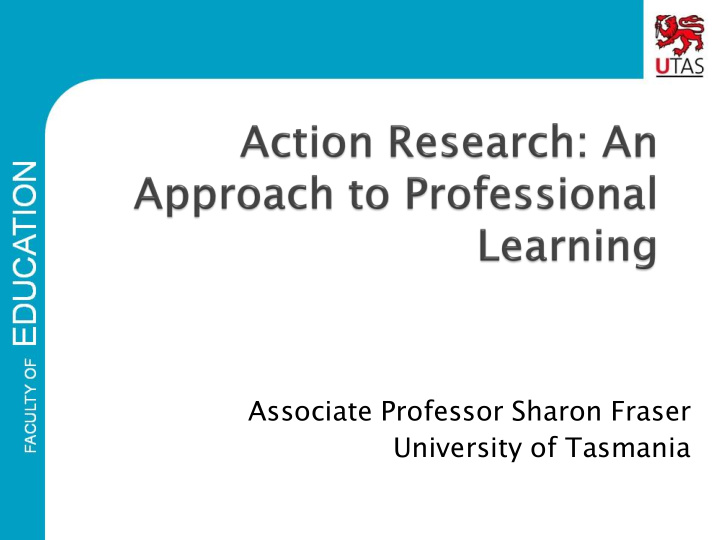



Associate Professor Sharon Fraser University of Tasmania
Termed coined by Kurt Lewin (1944) Widely used in a variety of forms including “participatory action research” 1 (Friere), and “appreciative enquiry” 2 (Stowell & West) Described as using “a spiral of steps, each of which is composed of a circle of planning, action, and fact-finding about the result of the action” (Lewin, 1946). 1. See for example: http://eprints.qut.edu.au/41575/2/41575.pdf 2. See for example: http://appreciativeinquiry.case.edu/intro/classics.cfm
In a nutshell in education, AR specifically refers to: ◦ “…a disciplined inquiry done by a teacher (or teachers) with the intent that the research will inform and change his or her practices in the future” (Ference, 2000, p.1) The studies that form part of AR, focus on educational questions that arise from the practice of teaching
Emergent ◦ Develops as the issue or problem unfolds ◦ Emerges from the ground up in response to the needs of practitioners Iterative ◦ May go through a number of cycles of action and reflection
Goal Plan Evaluate Evidence Implement
Ferrance, 2000, p. 9
The Action Research Spiral (Kemmis & McTaggart, 2000)
It is It is not what you are currently a huge extra burden doing but more elaborate data focussed collection that requires a lot of analysis planned for opinion Systematic unsubstantiated by any See Ferrance (2000. facts p.11) for data generation
Identify the issue or problem you want to address ◦ Don’t make this too big (see Ferrance, 2000, p.10) List all the things about that issue that you currently do / know ◦ Be honest – include everything even if you don’t think you do it very well Identify one thing to work on now ◦ Don’t avoid things because you think it is too small or trivial
Plan your first step Decide how you will impleme ement this step and who needs to be involved Identify what ev evidenc ence you will collect to know you are getting there
Recommend
More recommend